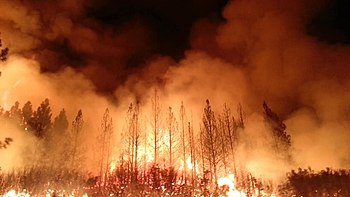"If all goes as planned, residents [of Warwick Rhode Island] won’t be waiting for weeks to have a burned-out streetlight replaced; they’ll have better roads, and best of all, the cost of borrowing all the money to get this done will be covered by all the savings."
Key elements to the plan are city-owned LED streetlights that will save an estimated $750,000 now being paid to National Grid for the maintenance of an estimated 9,000 Warwick streetlights, plus additional energy savings, and a low-cost 10-year loan estimated at 1.3 percent for $10.2 million from the Rhode Island Infrastructure Bank. The loan would fund a ramped up three-year road replacement and paving program, while the savings from streetlights would cover loan debt costs.
On Monday, the City Council gave second passages to ordinances authorizing the purchase of streetlights, conversion of fixtures to light-emitting diode (LED) technology and the financing of the project through an “appropriation obligation” bond not to exceed $3.2 million and the borrowing of the $10.2 million.....
In preparation for the streetlight conversion that it is hoped can be completed by this time next year, the city has solicited bids for the acquisition and installation of a system as well as its maintenance. Eight bids have been received for maintenance of the system.... For the acquisition and installation of the system, the city received two bids... Among the issues to be considered in addition to price, equipment and timing are the capabilities of the system and whether they could generate additional savings and be of use to other departments.
With a basic system, photoelectric cells would control when the lights go on and off. However, there is ... technology to link the lights into a “mesh network” that would give the city the capability to turn on or off lights as well as control their output by neighborhoods. The cloud-based system would come at a higher cost and would require the installation of repeaters and gateways as well as a monthly fee. An alternative is a cell phone-based system where each light is independent of the other and doesn’t require repeaters or gateways. It would have the capability of incorporating cameras. Both systems would provide real-time data on the system identifying outages and allowing ... [regulation of] the output of light.
The city is looking [at whether] ... the capability of reducing power and perhaps evening blacking some areas of the city during early morning hours could generate sufficient savings to more than offset added upfront costs and operational fees.
According to Michael D’Amico, financial advisor for the city, the light management option would cost an additional $1 million and the network mesh an added $1.3 million from the basic dusk to dawn photocell system at $3.2 million. At this point he doesn’t see a cost benefit to going with either of the more interactive systems.
With LEDs it is also easier to regulate the light shed so, for instance, sidewalks and streets can be lit without light spilling into abutting properties.
As streetlights don’t have individual meters, there’s not a precise knowledge of the energy being consumed. The city now pays National Grid a “tariff” based on light wattage and estimated power usage over the year. In addition it pays a maintenance fee.
It is estimated once the city replaces all the National Grid lights (it will buy those fixtures for a total cost of about $50,000) with LEDs energy consumption will be reduced by 70 percent.
...
Since the city will own the lights, it will assume their maintenance. The [warranty] on the lights that have a projected life expectancy of 10 years would mean the city would have little or no maintenance issues in the first year.
The cost of maintenance is being viewed as the major cost saving of the program with the potential of offsetting borrowing costs for the mayor’s road program.
The projected savings of $775,000 would offset about half the debt service costs of both the $3.2 million and $10.2 million bonds, D’Amico said....
When he announced the program, the mayor noted the historically low interest rates available as a common-sense and cost-effective way to address the city’s myriad infrastructure needs. The weighted interest rate for the bonds is expected to be 1.3 percent. Savings from the LED technology will significantly offset debt service costs.
...
The city would spread the repayment of the bonds over ten years.
Furthermore, by contracting for the maintenance, the burden is not placed on the Department of Public Works and the city can dictate acceptable periods for the work to be completed. A maximum of five days is being considered for the replacement of a nonfunctioning light. Currently it can take several months to replace a streetlight.
...
by John Howell
"City to acquire streetlights, replace them with LEDs; $10.2 million for roads also planned"
Posted Thursday, January 9, 2020









